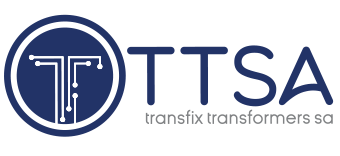The World Bank has approved a $138.5-million finance package to support the integration of renewable energy into Namibia’s electricity system by strengthening its transmission grid and integrating a second utility scale battery storage system into the country’s network. The initiative, which is Namibia’s first-ever World Bank financed energy project, will be implemented by NamPower, with the aim of minimising outage risks, supporting load growth, and unlocking future opportunities for power trade in the Southern African Power Pool.
State power utility Eskom has said it has “no choice” but to approach the Johannesburg High Court to force City Power to pay just over R1-billion in unpaid debt. Eskom noted that City Power began to default on payments in October 2023 and that it did not receive any payment for March, this year.
Electricity Minister Kgosientsho Ramokgopa denies that the prevailing reprieve from loadshedding has been “stage managed” to improve the prospects of the governing African National Congress ahead of the May 29 poll, attributing it instead to “orchestrated” engineering efforts undertaken by Eskom over the past 18 months. Speaking during a briefing that coincided with the fortieth consecutive day of no loadshedding and amid growing societal cynicism about the timing of such supply stability, the Minister also strenuously denied that the improved performance was because Eskom was relying more heavily on the diesel-fuelled open cycle gas turbines that it owned as well as those operated by independent power producers (IPPs).
The initial direct cost of placing South Africa on an energy transition pathway over the coming five years in line with its decarbonisation targets is calculated at a hefty R1.5-trillion in the Just Energy Transition Investment Plan (JET-IP). Less visible, however, are the socioeconomic costs associated with failing to pursue the Nationally Determined Contribution (NDC) goal of reducing carbon dioxide-equivalent (CO2-eq) emissions to the lower end of the NDC range of between 420-million and 350-million CO2-eq tons in 2030.
Despite recent efforts to bolster electricity generation capacity, the path to energy security remains full of obstacles. The integration of renewable energy, particularly wind power, is critical to these efforts, says the South African Wind Energy Association (SAWEA).
South Africa is enjoying a rare streak of uninterrupted electricity right before elections, drawing more suspicion than praise in a nation that’s become accustomed to the daily power cuts that have dragged on for years. The country is currently in its fourth successive week of no outages — the longest period South Africans have consistently had electricity supply in more than two years.
Construction group Wilson Bayly Holmes-Ovcon (WBHO) and renewable energy company Sola Group have completed construction of the Merak 2 & 3 solar photovoltaic projects near Lichtenburg, in North West.
The two solar plants, with capacities of 130 MW and 126 MW, respectively, span an area of 4 km2 and will deliver power through a wheeling agreement to mineral sands miner Tronox.
The proliferation of substandard and noncompliant electric cable products in the South African market poses significant risks to consumers and businesses, especially amid the country’s constrained and stagnating economy, says electronics manufacturer Apex Cordset Technologies (Apex). Apex is a dynamic company with a strong focus on technology and manufacturing, specialising in a range of safe and compliant electrical products and cable assemblies.
Independent power producer Mulilo reports that Jan Fourie has officially assumed the role of CEO, where he will oversee the company’s growth ambitions in South Africa’s public-procurement and private-offtake markets for both renewable energy and battery storage. Fourie, who is an electrical engineer with a master’s in business administration, has 17 years of experience in the African power sector, most recently as a senior executive as Scatec.
City of Johannesburg mayor Kabelo Gwamanda announced on Thursday that the City intends to add an additional 50 MW of power to its grid by bringing online the Durban Street Substation, in the next financial year. Gwamanda was presenting the State of the City Address in Johannesburg, where he said the City has also planned for an additional 100 MW of energy by the financial year’s end.
INDUSTRY NEWS
- NERSA appoints Electricity Market Advisory Forum to guide power-market reformDecember 19, 2025 - 2:04 pm
- Eskom offers more details on envisaged roles of the NTCSA and the TSODecember 18, 2025 - 11:04 am
- NTCSA says any electricity deal to salvage Mozal must ensure its financial sustainabilityDecember 17, 2025 - 3:01 pm
WHERE TO FIND US
Address
9 Yellow Street
Botshabelo Industrial Area
Botshabelo, Free State
Call / Email Us
Tel: +27 (0) 61 956 6772
Email: info@transfix.co.za
